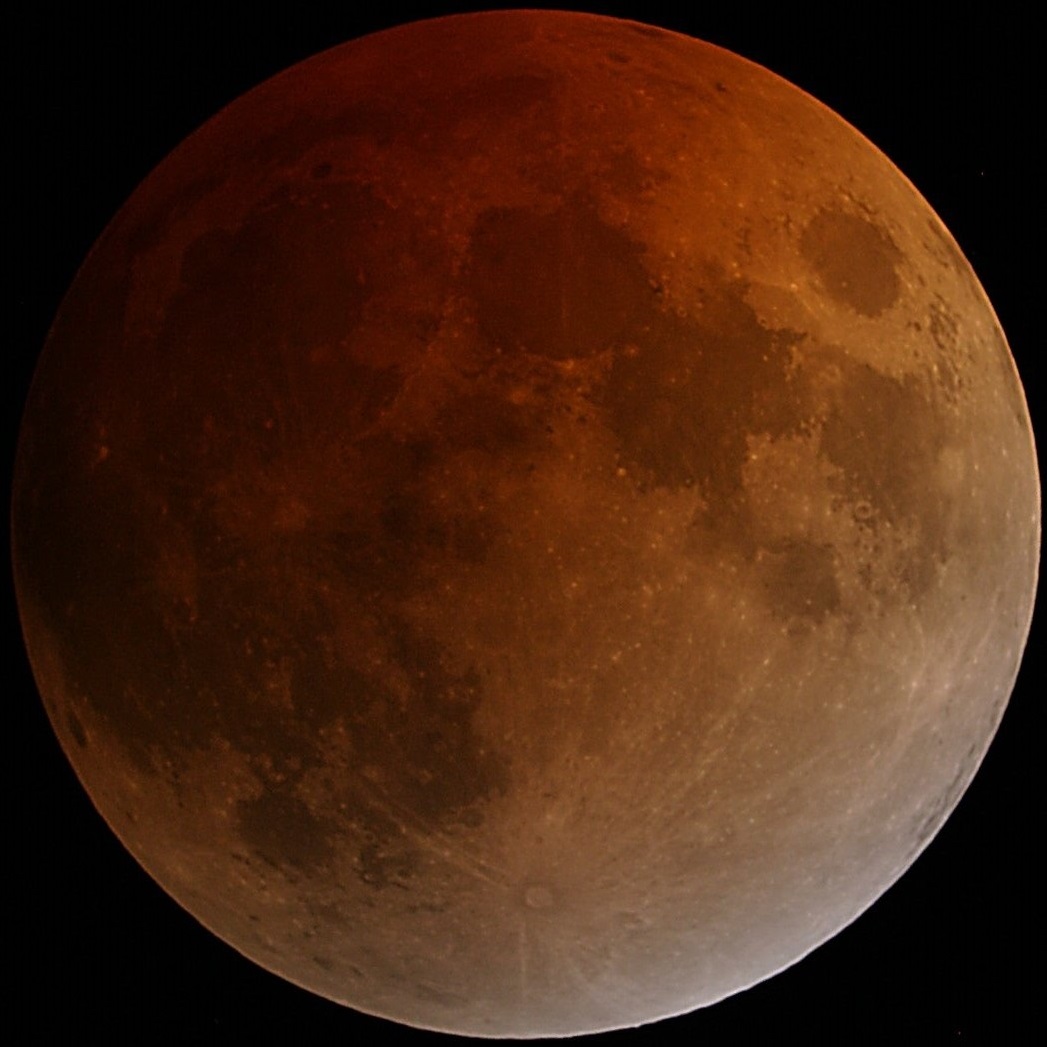Total lunar eclipse ushers in Election Day (Nov. 8, 2022) and visible in North Carolina
October 27, 2022
By Amy Sayle
Our second total lunar eclipse of the year happens in the hours before sunrise on Election Day, Tuesday, November 8, 2022, when the full moon passes into Earth’s shadow and turns an eerie shade of grayish red.
As long as the sky isn’t too cloudy, you can see this. However, nature has not arranged the timing of this eclipse for the convenience of those of us in the Eastern United States. Still, you may not mind losing some sleep to see the heavens align. Here are viewing tips for North Carolinians:
1) Set an alarm before bedtime on Monday night, November 7. Unless you normally wake up super early, or stay up most of the night—or you’ll be up early to vote when the polls open on Election Day—you’ll need help waking up Tuesday morning in time.
Below is the timing of the main* action for North Carolinians. All times are Eastern Standard Time on Tuesday, November 8, 2022:

- Partial eclipse begins at 4:09 a.m.—Look for the Moon in the west, about 1/3 of the way up in the sky. The Moon will be in the constellation of Aries, and you may notice the Pleiades star cluster and reddish Mars higher in the west. Over the next hour you can watch as it looks like a bigger and bigger bite is being taken out of the Moon as the Moon moves farther and farther into Earth’s umbral (dark inner) shadow. Can you tell that Earth’s shadow on the Moon is curved? That’s evidence you live on a round planet.
- Total eclipse begins at 5:16 am.—Thanks to Earth’s rotation, the Moon will have dropped lower in the west. You might need to dodge trees to find a good view. You might also be surprised that it takes a little hunting around to notice the Moon, since it’ll appear much darker than you’re used to seeing it at full moon.
- Maximum eclipse is 5:59 a.m.—You’re living dangerously if you wait until now to view the eclipse. The Moon will be quite low, especially if you live farther east within our time zone, and it will be possibly blocked from view by trees or buildings.
- Total eclipse ends at 6:42 a.m.—Don’t wait this late to try to look. For North Carolina viewers, this is about when the Moon will disappear below the horizon.
(*Technically, the eclipse begins just after 3 a.m. EST, when the Moon moves into the outer, fainter part of Earth’s shadow. This penumbral eclipse is less easily observable and less worth losing sleep over.)
Anyone on the nighttime side of Earth during the hours of the eclipse gets to see it, as long as the skies cooperate. If you live in a different time zone, convert the above times from EST to your own time zone, and note that the specific location of the Moon in your sky at a given instant in time will vary by time zone.
2) Check the weather forecast for early Tuesday morning, November 8, 2022. Unless you are okay with losing sleep to view rain or an overcast sky, do check that your sky will be reasonably clear during the time you plan to view the eclipse. Don’t let a forecast of partly cloudy skies put you off too much, though, since the clouds may move and reveal glimpses of the Moon for patient viewers.
3) Assemble your viewing equipment. This will be easy. You don’t need anything special. Warm clothes and your eyes will do. If you happen to have binoculars or a telescope, bring them out to get an even more spectacular view of the eclipsed moon. It’s perfectly safe to look at a lunar eclipse. Remember to never aim binoculars or telescopes at the Sun. (Safety warnings about viewing eclipses apply to solar eclipses.)
4) Choose a location. You don’t need a special location. You don’t need dark skies. You likely can just walk outside your home until you find a relatively unobstructed view toward the west. If you happen to have a west-facing bedroom window, you might not even have to get out of bed.
5) Enjoy watching the heavens align. Congratulate yourself on being willing to lose sleep to enjoy nature at night and witness objects in our solar system aligning: Sun, Earth, Moon…and you.
You can learn more about eclipses – including the spectacular solar eclipses coming up in 2023 and 2024 – on NASA’s eclipse site.
